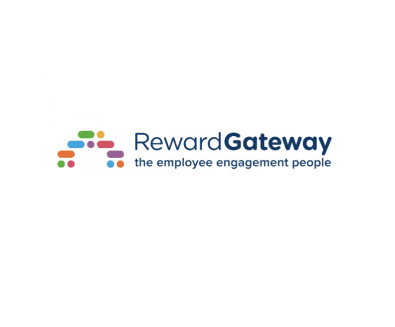 A recent study reveals the challenges of executing rewards programs on an international level.
A recent study reveals the challenges of executing rewards programs on an international level.
By Chris Wakely
Technology and the growth of new and lucrative markets around the world have made it possible -and necessary -for today’s businesses to pursue global expansion. As companies expand into new markets and hire talent in multiple countries, managing HR becomes more complex and challenging, particularly as it relates to administering and communicating benefits programs to multinational employees.
Along with managing legislative changes, escalating costs, slashed HR budgets, and an uneven economy, organizations undergoing global expansion must still ensure that their benefits and reward programs are delivered consistently and effectively to their internationally-based employees. A recent study, 2014 Global Employee Benefits Watch from Thomsons Online Benefits, takes a closer look at the current concerns and challenges facing multinational organizations – from recruiting to benefits administration to employee engagement. Results reveal that organizations are making gradual changes and shifts to their benefits plans in the wake of HR challenges. The study also pinpointed an increasing need for global companies to create a unified approach to control their global rewards message; offer a consistent experience for international employees; and be able to demonstrate the value of benefits investment on an individual employee level.
Benefits Strategy
Global companies face far more challenges when deciding on a unified benefits strategy than businesses based in one location, as different countries have different expectations, legislation, and working cultures.
According to 58 percent of participants, the biggest people challenge facing HR teams is helping their organization attract and retain talent. An effective benefits strategy is key when you compete with other companies not only to attract key potentials, but to encourage people to stay. However, half of participates cited a lack of understanding of total reward value among employees as one of their biggest issues in relation to their global benefits strategy.
Additional challenges cited in the study include:
- Aligning benefits practices with business goals and strategy (46 percent);
- Maintaining a competitive employer proposition (44 percent); and
- Employee engagement (35 percent).
This could be a motivational issue closely linked to communicating the right messages to inspire the workforce.
The study also found that more than half of the participants rely on employee engagement surveys (62 percent) and turnover statistics (56 percent) to measure their benefits strategy’s effectiveness. Surprisingly, however, 55 percent of U.S.-based HR professionals reported they don’t measure the effectiveness of their global rewards strategy at all, while 36 percent relied on line manager’s feedback. This probably explains why 73 percent of HR professionals in the U.S. alone are having difficulty demonstrating return on investment to key stakeholders.
These results raise the question of whether in 2014, companies will be able to ensure they have the right global rewards strategy in place to attract key talent. And, with 40 percent of participants reporting that the pressures on costs continue to escalate, will they be able to assess and report on their strategy’s effectiveness around the world?
Benefits Administration
Administering benefits programs globally is an enormous challenge: Every region and every country is different and requires different benefits processes. This may be driving the lack of consistency in the way organizations’ benefits are currently being administered around the world. Less than 30 percent of participants are using some type of software to administer and communicate their benefits globally, while almost half have a different approach and a mix of manual processes and software in each country.
The study also shows an increasing need for global companies to implement solutions that will allow them to demonstrate the value of its total reward investment on an individual employee level. More than 50 percent are experiencing a burden on internal resources with administrating benefits, and 39 percent are having difficulty reporting globally. Not surprisingly, 66 percent would much rather use global software such as dedicated global benefits management (35 percent) or HR software (31 percent).
A quarter of multinationals already use software to manage their benefits, so what is stopping more organizations from implementing global benefits software? Executive buy-in for introducing a global solution is the main challenge for participants of the survey.
Employee Engagement and Communication
Ensuring accurate and consistent communication can prove difficult for multinationals, as employers have 10 to 15 benefits per country, and employees from four generations. So it makes sense that 33 percent of study participants see employee engagement as one of the main HR pain points.
Responses from the study show that the most common approaches to communication are still very basic in today’s multimedia world. The majority of employers use three approaches to deliver information:
- Intranet (53 percent);
- One-on-one sessions (52 percent); and
- Direct mail (50 percent).
But today, 29 percent of the global workforce is characterized as ‘anytime, anywhere information workers,’ who use three or more devices, work from multiple locations, and use many apps. Only 3 percent of employers use mobile, 8 percent social media, and 5 percent richer content such as video, to reach their employees.
As employees continue to reinvent workplace technology, the main question will be: How can HR help companies reinvent themselves to keep up with the changing expectations of today’s tech-savvy talent?
Multinational organizations are also facing challenges in creating a unified global brand for all of their employee communication. In fact, 83 percent of studied employers don’t use a global benefits brand to promote their benefits packages. The opportunity for development in communications seems clear. The employee journey, branding, and messaging must remain consistent and build global identity.
This is accomplished through harmonized, branded reward and communication programs with the same look, feel, and structure across all locations.
Employee Concerns
The availability of skilled workers is shrinking. Sectors like technology and finance that require high skill levels are already engaged in a war for talent. This war has no end in sight, as 69 percent of participants believe they’ll face a shortage of qualified workers within the next five years.
It comes as no surprise that 35 percent of companies are looking to change their recruitment efforts, with 24 percent reporting to hire younger employees, 10 percent hiring older workers, and 23 percent reporting that they will rehire retired employees.
More and more, retirees are seen as highly trained people with a wealth of knowledge. With years of experience, there is massive benefit to bringing them back into the fold. Companies are realizing that retirees can be hired for a specific project, which calls for different benefits. For example, older workers are not typically interested in career advancement -they’re interested in fulfilling work instead.
While it is clear that business practices will need to change to appeal to both older and younger workers, 38 percent of respondents are struggling to provide a flexible strategy for these different demographics. Only 4 percent offer on-site child care, and 41 percent offer nothing for employees caring for an elderly parent.
If companies can have a stronger identity and culture through employee reward and communication, and define what a good employee looks like for them, they can be radical about the age and profile of the employee they employ.
It’s obvious that companies recognize the importance of developing a strong culture to give them competitive advantage in the market place. As more research and reporting is done on the drivers and motivations underlying global benefits strategy worldwide, it will be interesting to see how the challenges and solutions continue to evolve.














